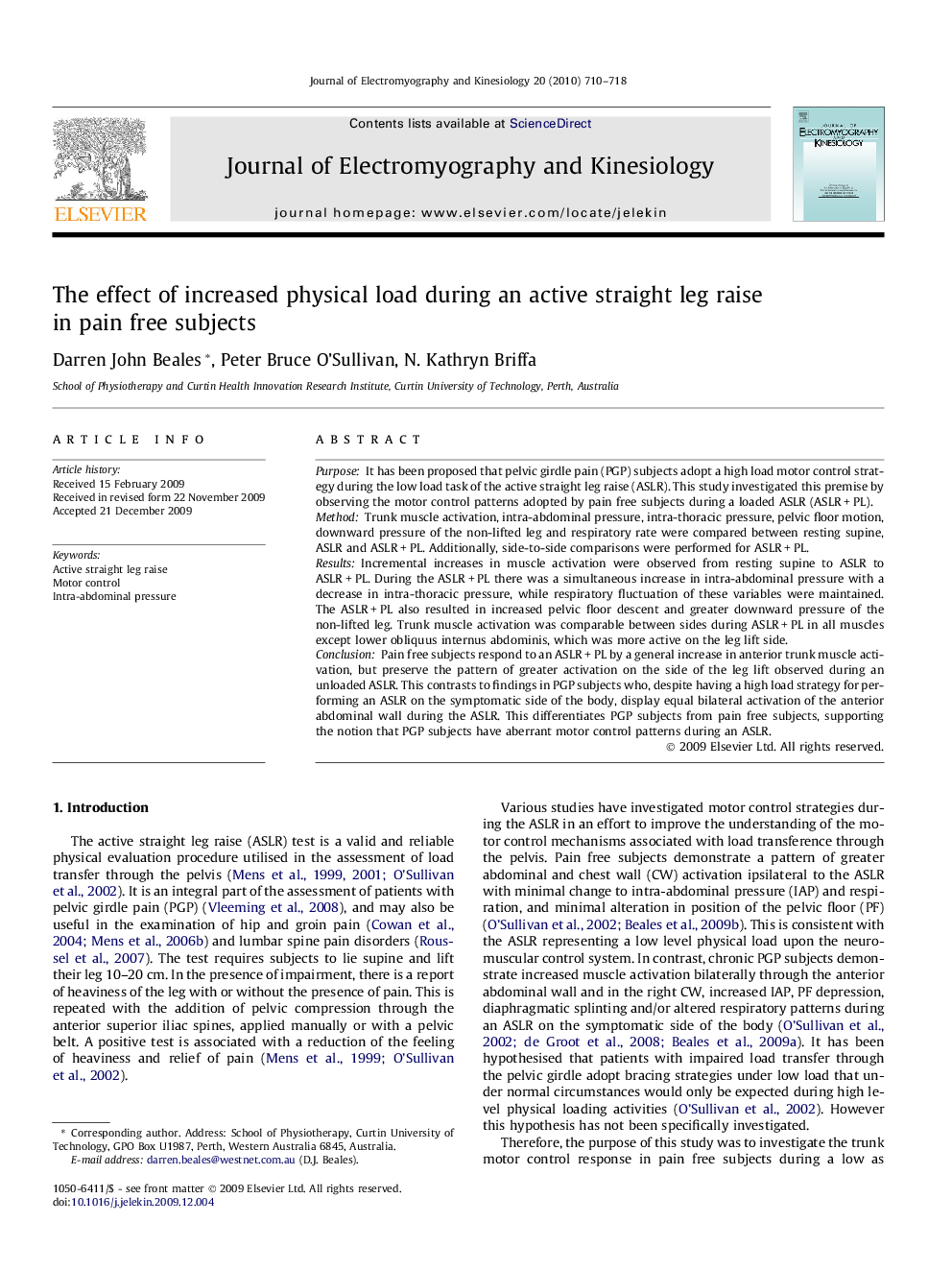| Article ID | Journal | Published Year | Pages | File Type |
|---|---|---|---|---|
| 4065171 | Journal of Electromyography and Kinesiology | 2010 | 9 Pages |
PurposeIt has been proposed that pelvic girdle pain (PGP) subjects adopt a high load motor control strategy during the low load task of the active straight leg raise (ASLR). This study investigated this premise by observing the motor control patterns adopted by pain free subjects during a loaded ASLR (ASLR + PL).MethodTrunk muscle activation, intra-abdominal pressure, intra-thoracic pressure, pelvic floor motion, downward pressure of the non-lifted leg and respiratory rate were compared between resting supine, ASLR and ASLR + PL. Additionally, side-to-side comparisons were performed for ASLR + PL.ResultsIncremental increases in muscle activation were observed from resting supine to ASLR to ASLR + PL. During the ASLR + PL there was a simultaneous increase in intra-abdominal pressure with a decrease in intra-thoracic pressure, while respiratory fluctuation of these variables were maintained. The ASLR + PL also resulted in increased pelvic floor descent and greater downward pressure of the non-lifted leg. Trunk muscle activation was comparable between sides during ASLR + PL in all muscles except lower obliquus internus abdominis, which was more active on the leg lift side.ConclusionPain free subjects respond to an ASLR + PL by a general increase in anterior trunk muscle activation, but preserve the pattern of greater activation on the side of the leg lift observed during an unloaded ASLR. This contrasts to findings in PGP subjects who, despite having a high load strategy for performing an ASLR on the symptomatic side of the body, display equal bilateral activation of the anterior abdominal wall during the ASLR. This differentiates PGP subjects from pain free subjects, supporting the notion that PGP subjects have aberrant motor control patterns during an ASLR.
